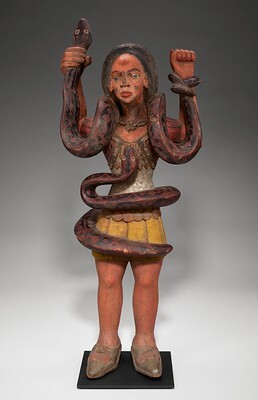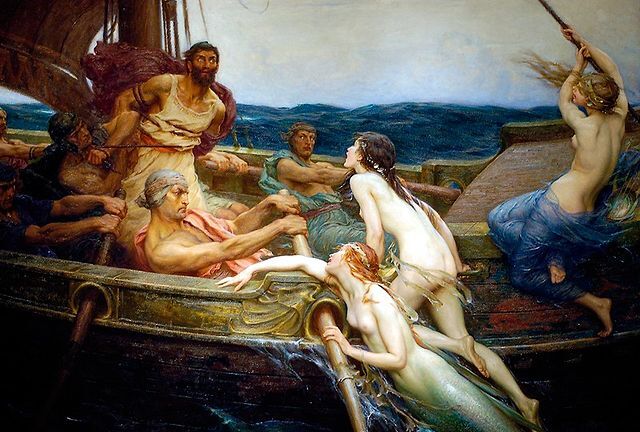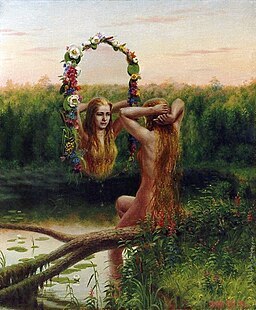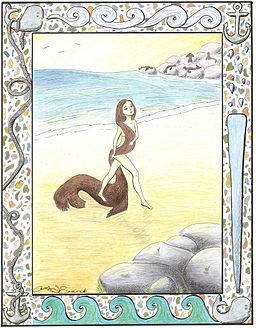Mermaids and Sirens
Introduction
Mermaids and sirens are an integral part of the ocean mythology of many different cultures. They are typically depicted as a human woman with a fishtail below the waist. This is indicated within the word itself, with “mere” meaning sea and “maid” meaning young girl or woman. Although these creatures are similar in their depiction across cultures, they carry a variety of meanings and symbolism. There are two contrasting themes commonly associated with mermaid mythology: that of the life and fertility of the ocean and that of the destructive nature of water. Different cultures subscribe to different meanings. While some view mermaids as entirely good or entirely evil, others have had these meanings change over time or maintain moral ambiguity.
Mermaids as a Positive Force of the Ocean
In West, Central, and South Africa, the most common mermaid depiction is that of Mami Wata, or the “mother of the waters.” This a gender-fluid creature meaning that she appears as both a woman and a man, depending on the story. African cultures worship this spirit for healing and wisdom, as well as to ward off natural disasters. The Southeast Asian story of Suvannamaccha from the Ramayana conveys a similar meaning. Suvannamaccha appears in an Indian epic poem about Hanuman where the two meet and fall in love after she was instructed to hinder the hero’s efforts. Nowadays, Suvannamaccha is a symbol of good luck displayed on many charms, banners, and streamers.
Mermaids as the Dangers of the Ocean
Other stories depict mermaids and sirens in a much darker light. For instance, the story of Ulysses and the sirens from the Odyssey depicts them as awful creatures that lure men to their deaths with their hypnotic singing. Selkies and Rusalki, while sometimes depicted positively, had shifted towards a more negative depiction in their respective cultures. Rusalki were originally believed to represent fertility and agriculture. Over time, their stories became of ghosts of women who died by drowning, and in their anger, they lured men and children to similar deaths. Selkies have also been known to tempt men to their deaths.
Mermaids as the Ambiguous Nature of the Ocean
Finally, there are many stories of mermaids and siren-like creatures that are unclear in their morals. For example, merrows, which are an Irish depiction of mermaids, are seen as traditional mermaids with beauty and long green hair. However, this description only holds true for their female counterparts, whereas the males are shown to be cruel and more fish than human. Melusine is another feminine spirit depicted with a vague moral code. In medieval European folktales, she is commonly depicted as getting revenge on her father due to his maltreatment of her mother. Her morals are questionable because of the actions she committed in defense of her mother, which caused great harm and fear.






